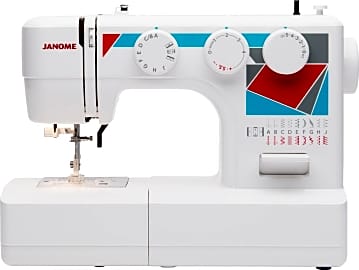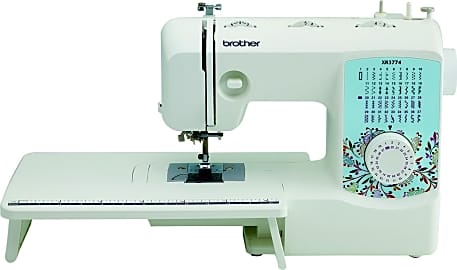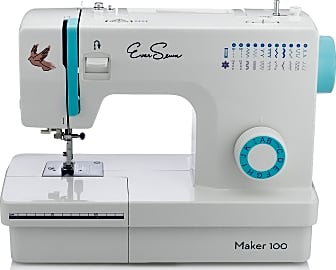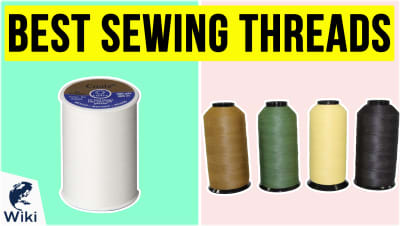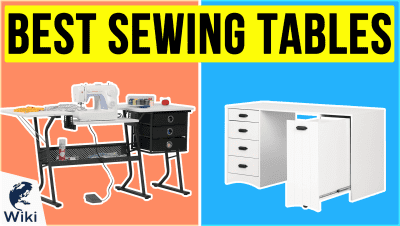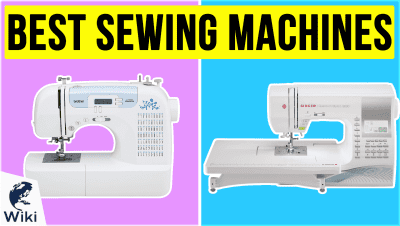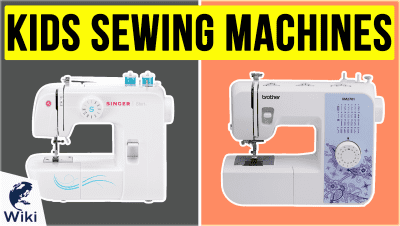The 10 Best Budget Sewing Machines

This wiki has been updated 32 times since it was first published in February of 2017. Sewing at home can be an enjoyable creative outlet, a profession, or a necessity. One thing it doesn’t have to be is expensive, thanks to an impressive range of budget-friendly machines. We've selected options for beginners as well as the more experienced, so there's one for all skill levels. Keep in mind that each is a long-term investment, so don’t be afraid to spend what you can afford. When users buy our independently chosen editorial choices, we may earn commissions to help fund the Wiki.
Editor's Notes
July 25, 2020:
Currently, we still think it's tough to top the Brother XM2701, which has enough features to be useful for a range of projects, but not so many that it's intimidating for beginners. And, like the Janome Mod 19 and the EverSewn Maker 100, it has attractive styling, adding a cute decorative touch to your sewing table or desk. The Bernette 35 remains a solid choice, as well; it's on the pricey end of the "budget" spectrum, but it's a machine newbies can grow with, making it worth the investment.
We decided to remove the Singer 4423 in favor of the relatively similar Singer 4432. Where the former has 23 built-in stitches, the latter has 32, which represents more bang for your buck. And after some consideration, we kept the popular Brother CS6000i. It's not necessarily the best choice for the impatient, as there are occasional thread tension and tangling issues. Luckily, small changes in needle or thread can often fix this, but making the right choices can be daunting. The machine does include a 25-year warranty, though, so the company should be able to assist with any true mechanical issues found on the machine.
August 07, 2019:
By the time you invest in everything you need to get started sewing, from fabric to thread, you might start to feel a strain on your wallet — but these budget machines should help. We’ve looked for inexpensive models that are robust enough to last, so you don’t have to worry about your investment. At this time, top models still include the Janome 2212, Brother XM2701, and Singer 4423. One issue with the Singer model, however, is that the 25-year warranty doesn’t cover all that much; most of the machine’s functionality falls under a far shorter 90-day guarantee. And speaking of Singer, we’ve also decided to keep the very budget friendly Singer 1304, but we’d like to note that here, inexpensive doesn’t necessarily equal good for beginners. That’s because this model doesn’t have all the usability features of some entry-level units, features that make the process much easier for those who are just starting out. For that reason, it might be a good choice for those who have some experience but who, for whatever reason, don’t have the cash or space for a pricier, more robust unit.
Special Honors
Husqvarna Viking Emerald 116 It’s on the more expensive side of the budget spectrum, but with its 60 stitch functions, the Husqvarna Viking Emerald 116 is a model that you can expect to use for a long time. It arrives with plenty of accessories, too, including a felt cushion and a lint brush. husqvarnaviking.com
A Brief History Of Sewing
It wasn't until the 1860s that consumers started to purchase mechanical sewing machines for home use.
Sewing has been an integral aspect of human life for almost as long as there have been humans. Archaeologists have discovered bone needles dating back to the Gravettian period roughly 25,000 years ago. More than likely, humans were sewing long before that time, we just haven't yet found the evidence. It is believed ancient homo sapiens used these bone needles for sewing furs together to keep warm and to create decorative patterns in textiles. Without the ability to sew, it most likely would not have been possible for humankind to settle in some of the cooler regions of the world after the last Ice Age.
In 7,000 B.C.E., Armenians started to produce copper needles as humankind developed better metalworking skills. Man created the first bronze needles sometime around 2,000 B.C.E., and most historians believe that it was the Germans who developed the first iron sewing needle in the 3rd century B.C.E.
Charles Fredrick Wisenthal obtained the first mechanical sewing machine patent in 1755, which incorporated a double-pointed needle. His machine could only produce crude, very loose stitches, which made it unfeasible for use in actual clothing production. For this reason, it is hard to consider him the inventor of the sewing machine. It was Thomas Saint, an English cabinet maker, who actually built the first fully-functioning sewing machine in 1790, which he also patented. It actually contained many of the same features as modern day sewing machines, such as a tensioning system and an overhead arm.
Seeing the commercial potential of a mechanical sewing machine, many inventors tried to replicate or improve upon Saint's creation, with the most notable being Barthélemy Thimonnier, a French tailor. In 1829, he invented a machine that was capable of producing embroidery-style chain stitches, which he patented in 1830. He went on to open the world's first commercial clothing manufacturing company that used mechanical sewing machines. It was, of course quickly replicated by many other clothing manufacturers.
It wasn't until the 1860s that consumers started to purchase mechanical sewing machines for home use. In 1889, the Singer Sewing Corporation created the electric sewing machine, and they are still a major player in the industry to this day. Over the last 100 years, there have been a number of small improvements to sewing machines to make them better, more efficient, and more compact, but the basic principle in how they work hasn't changed much.
The Many Benefits Of Sewing
To the lay person, it may seem as if sewing is a dying art form, though those who think this would be sorely mistaken. In fact, over the last few years, there has been a double-digit increase in the number of people involved in some form of needlecraft hobby, like sewing, knitting, and quilting. Sewing-related search queries on Google are rising, and there are a number of sewing-related classes on offer throughout the United States.
Research has shown that sewing-related activities can be extremely therapeutic.
Research has shown that sewing-related activities can be extremely therapeutic. The repetitive action that sewing requires creates a zen-like mind state in many people. They become so absorbed in what they are doing that, for a brief moment, they forget about the many issues that weigh on their mind throughout their daily life. For the many people out there who have trouble quieting their mind enough to meditate, sewing might be the next best thing. At the same time, you'll also be creating a beautiful new dress or fashionable blouse.
Many might be surprised to learn that sewing can actually help ward off dementia, as well. Performing tasks that require a high degree of concentration and attention to a series of small steps helps to keep the brain active. The brain may not be a muscle, but it follows the same principle, in that you either use it or your lose it. This means that sewing provides a two-fold benefit to your mental well-being: it helps to relieve stress and it keeps your mind sharp as you age.
Sewing can also lead to better hand-eye coordination. It requires a high degree of dexterity, as you will spend hours working with a very small needle and thread. Better hand-eye coordination can help with many everyday tasks, such as assembling furniture, slicing ingredients for your next culinary masterpiece, or blasting out that tweet in record time.
Tips For Choosing A Sewing Machine
Choosing your next sewing machine doesn't have to be difficult. The first thing is to determine the type of fabrics you want to work with and the types of stitches you want to be able to create. If you are just beginning to learn how to sew, or only want to be able to make simple repairs to your clothing, a basic electric model is probably enough for your needs. If you plan on making complex stitches and a range of garment types, an advanced model capable of a variety of stitch types is a better choice. The more advanced models will usually also offer adjustable tension control, which can be helpful during precision jobs.
Those who want to create complex garments out of a variety of fabrics will need a more advanced model. If you want to sew anything with pockets or sleeves, you should purchase a model with a free arm. A free arm machine gives you more leeway to manipulate the fabric around and under the needle. Machines capable of an overlock stitch allow you to create neater seams and hems, which is important for giving your garments that professionally-produced look. If you will regularly be working with thick and heavy fabrics, like canvas or denim, it is important to choose a sturdy machine that can feed the needle through these fabrics without getting stuck.
Every user, no matter their skill level, can benefit from a model with a foot pedal that allows you to control the machine, while leaving your hands free to work with the fabric.



